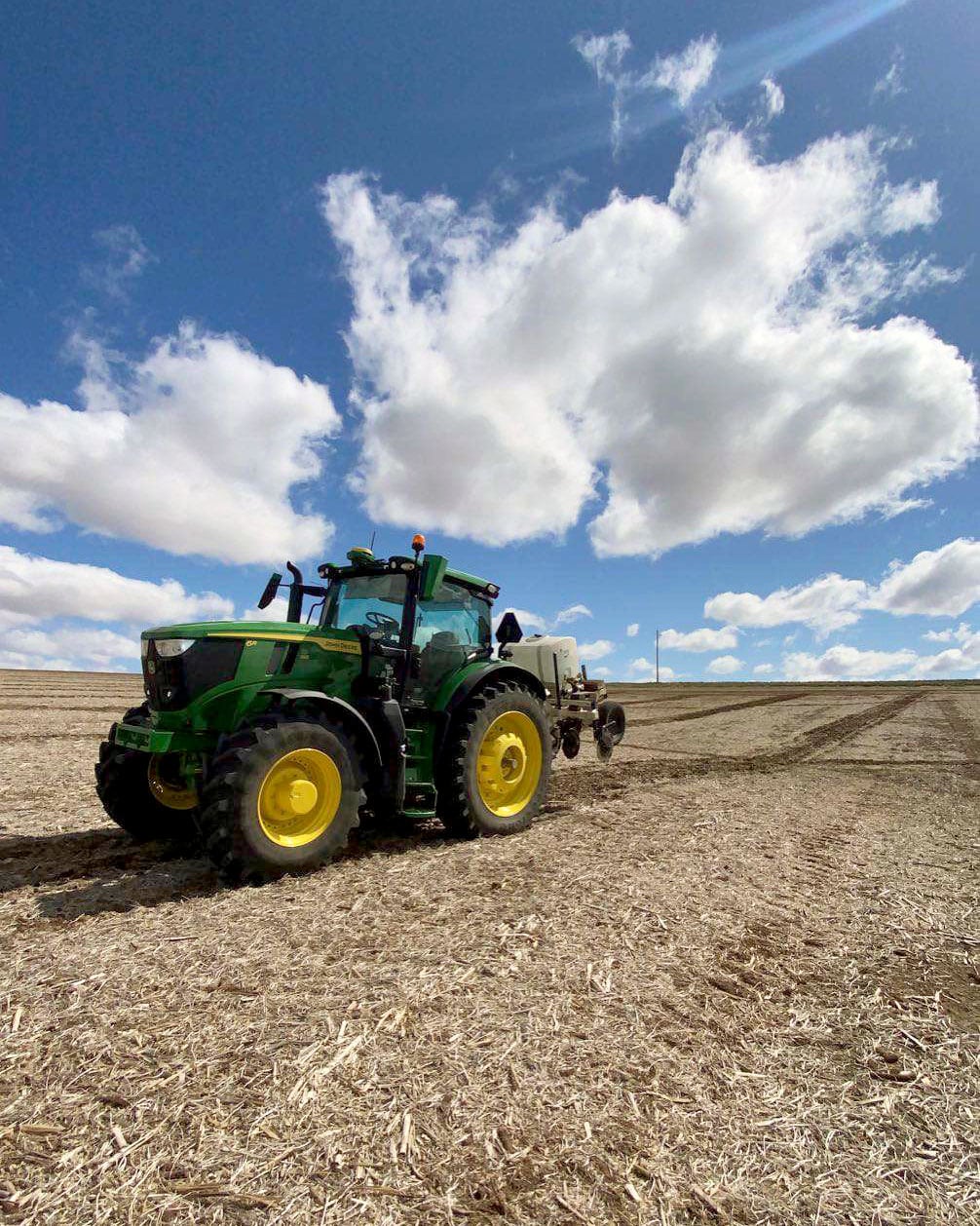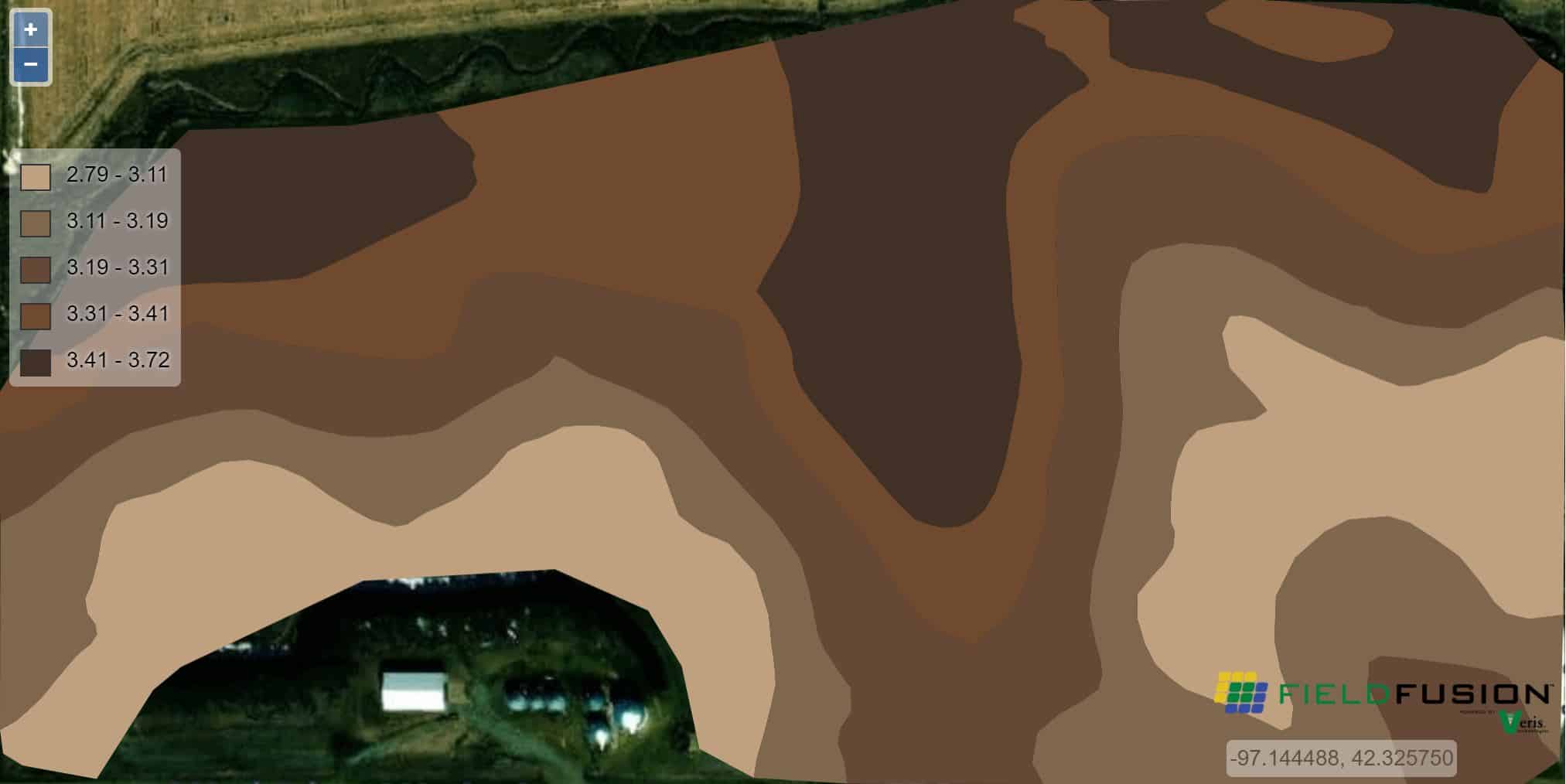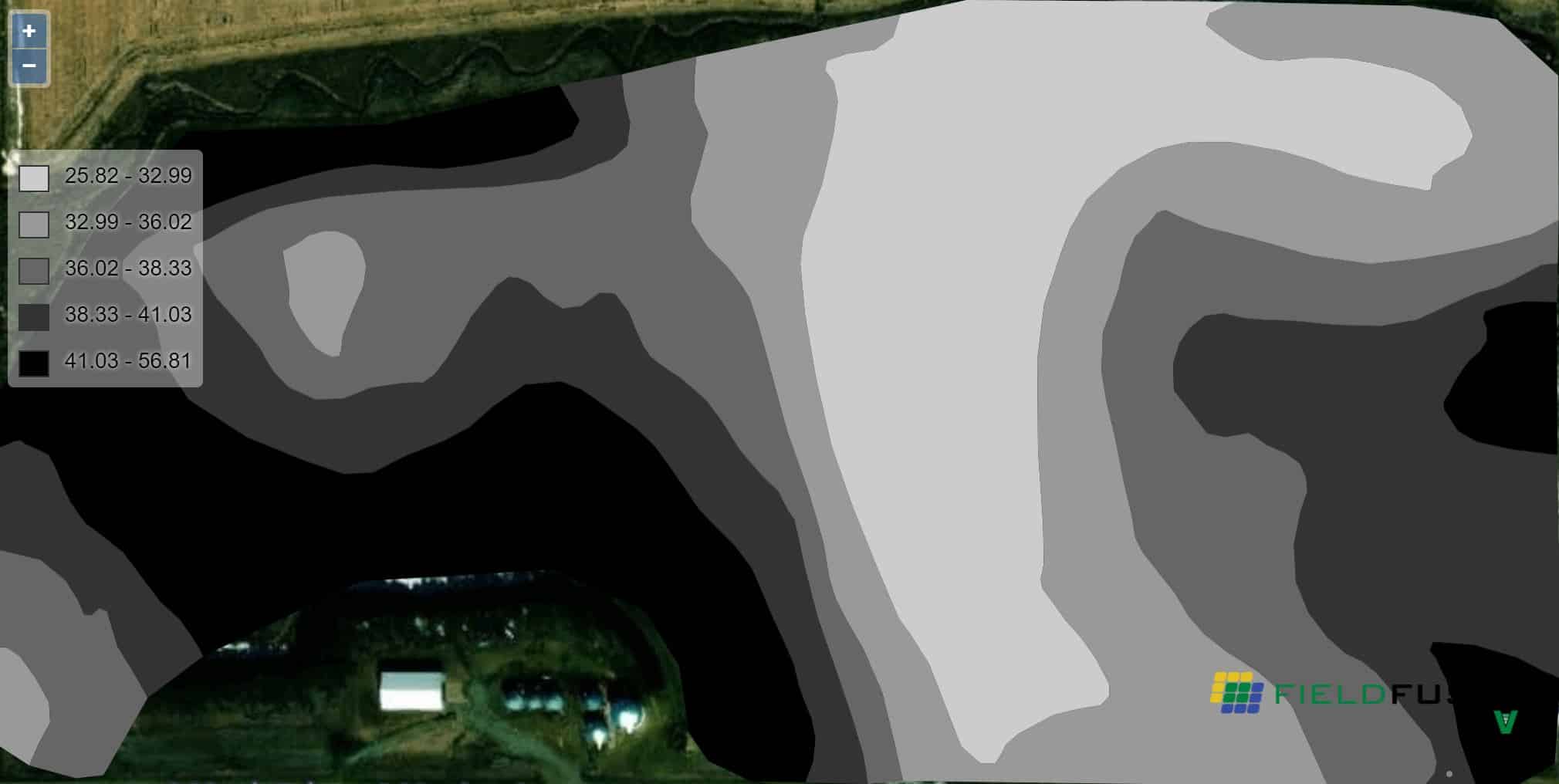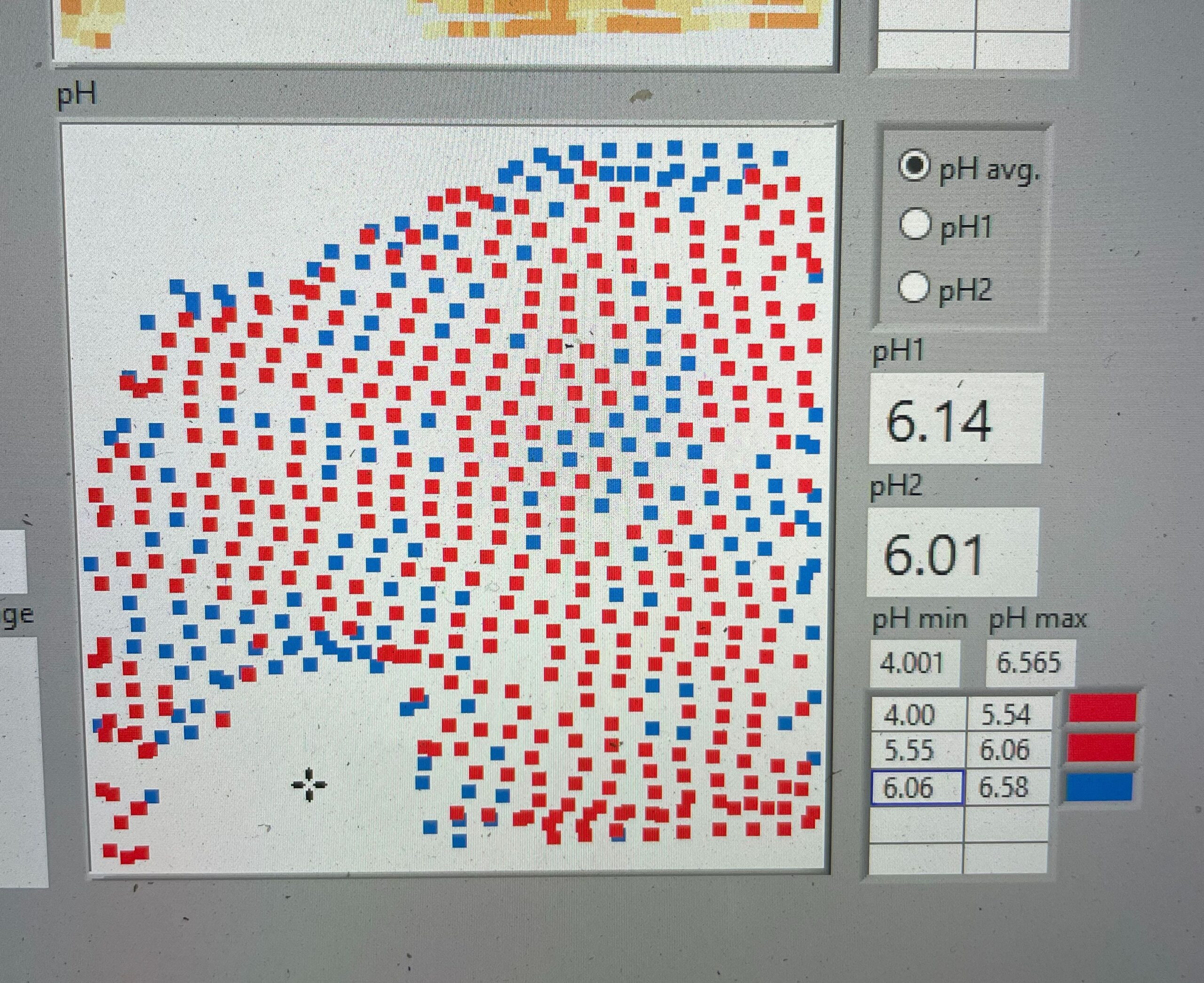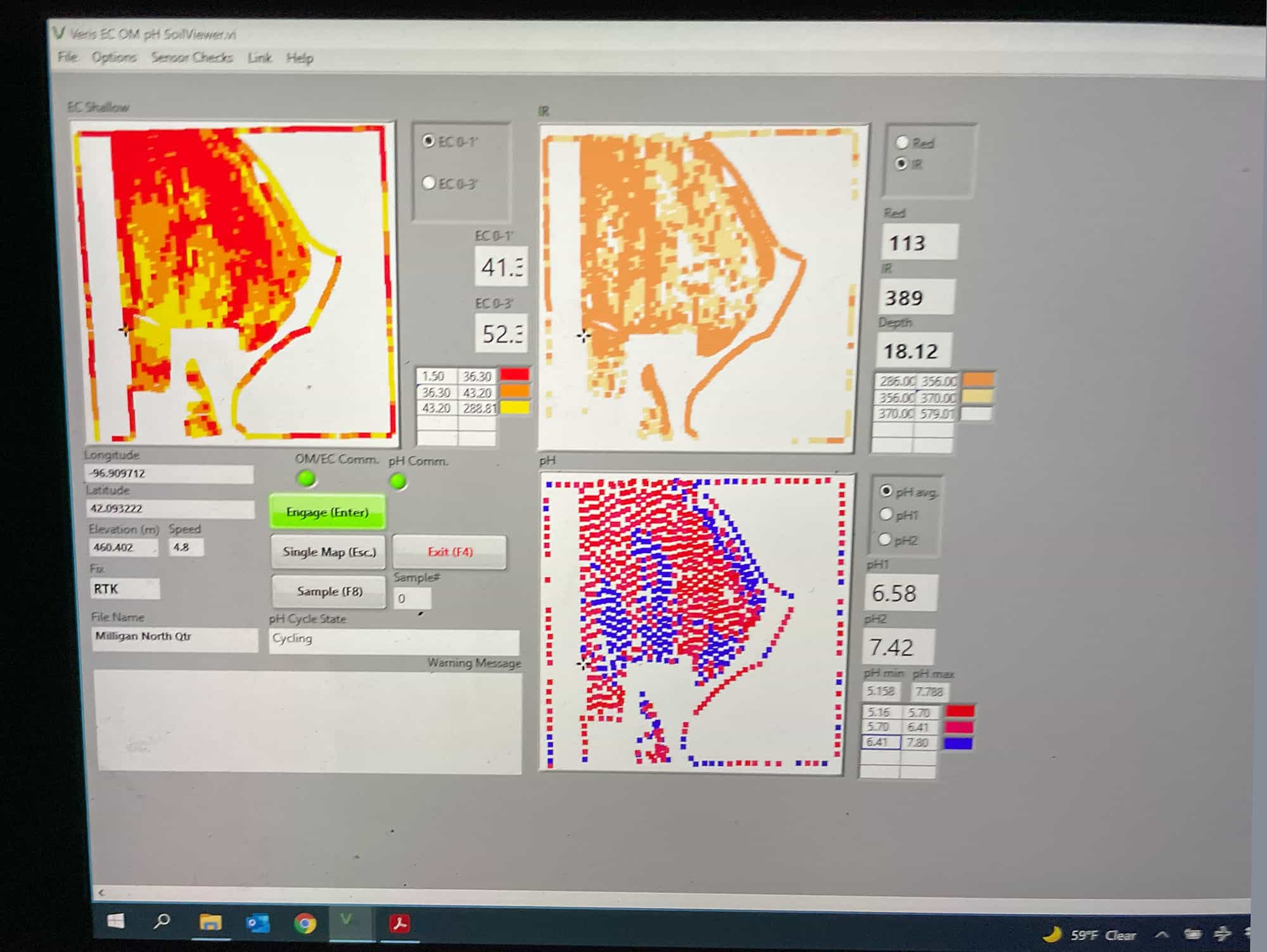Veris
Grid soil sampling is a technique used to collect soil samples from a field at regular intervals.
Veris Soil Sampling
- Real-time sampling of Organic Matter
- Electrical Conductivity at multiple depths
- 12 samples-per-acre of pH
- Lab Verified Data
- Elevation and Slope Recording
- Variable rate mapping
What are the advantages of such accurate soil samples?
Grid soil sampling is a technique used to collect soil samples from a field at regular intervals, typically using a grid with uniform spacing between sample points. Taking sub-acre grid samples can be a useful approach for soil testing and analysis for several reasons:
- Precision Agriculture: By collecting soil samples at a regular interval, such as every 1 acre, farmers can use precision agriculture techniques to apply inputs more precisely to specific areas of the field. This can help to reduce input costs, improve crop yields, and minimize environmental impact.
- Identify Soil Variability: Taking Sub-acre grid samples can help farmers identify the variability of soil properties across the field. This information can be used to create soil maps that show areas of the field with different nutrient levels or soil types. This can help farmers make more informed decisions about where to apply inputs, such as fertilizer or lime, to maximize crop yields.
- Determine Optimal Planting Areas: The soil variability data collected from sub-acre grid samples can help farmers identify areas of the field that are best suited for different crops. This can help farmers maximize the yield potential of their land by planting crops that are better suited to specific soil types or nutrient levels.
- Meet Regulatory Requirements: Soil testing is often required by regulatory agencies as a condition for receiving permits or subsidies for agricultural practices. Taking sub-acre grid samples can help farmers meet these requirements and ensure that they are in compliance with relevant regulations.
Overall, taking sub-acre grid samples can provide farmers with valuable information about the variability of soil properties across their fields, which can be used to make more informed decisions about crop management practices. This can help to improve crop yields, reduce input costs, and ensure compliance with regulatory requirements.
